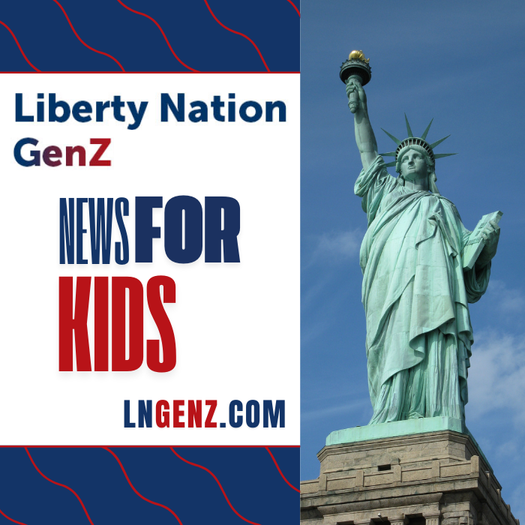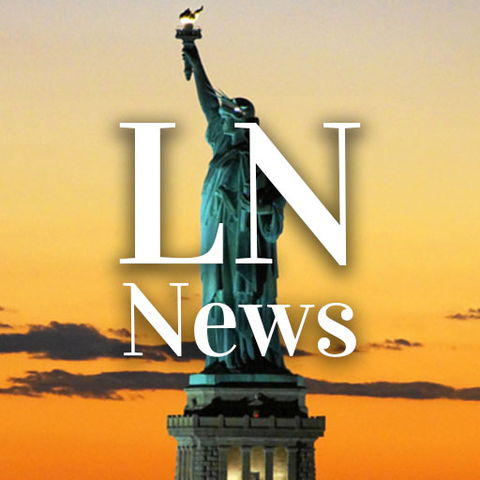


One of the more humorous aphorisms you might have heard is that “everyone complains about the weather, but nobody does anything about it.” This speaks to those things in life – death and taxes also come to mind – that are unavoidable and over which humans have no control. The same goes for the seemingly perpetual dissatisfaction of the American people with the two major political parties. We’ve been hearing and reading about it for years, leading to spasms of speculation about whether the time has finally arrived for a competitive and sustainable third party.
If you are a Republican, you might well say you are satisfied with the historic rise of Donald Trump. But Trump is less a party animal than a true independent. If he were simply a mouthpiece for long-held conservative orthodoxy, he would not have so pointedly talked down George W. Bush, John McCain, and Mitt Romney, the three previous GOP presidential nominees, and their fellow neoconservatives who dominated the right for the first 15 years of the 21st century. If he were a rock-ribbed conservative, this president would not have condemned the Iraq War, spoken of the wonders of tariffs, challenged NATO, talked down democratic institutions, and commingled the public and private sectors. And he would not have infuriated many on the right who came to be known as “Never Trumpers.”

But it’s on the other side of the aisle where the discussion becomes critical. Many long-standing Democrats are now considering a break from a party that has steered into a progressive cul-de-sac. This brand of quasi- or outright socialism is simply not appealing to traditional liberals who generally favor higher taxes and a strong central government. But a growing number of conventional liberals cannot stomach a party that has descended into maniacal anti-Trumpism while party elites embrace open borders, DEI, the normalization of campus radicals, defunding the police, the coddling of criminals, hysterical climate change alarmism – and the list goes on.
Two recent surveys, one by Gallup and the other by the Democratic Socialists of America (which counts New York City mayoral nominee Zohran Mamdani as a proud adherent), reveal that among self-declared Democrats, roughly two-thirds favor the oxymoronic ideology known as democratic socialism over capitalism. Is this inclination toward collectivism on a broad scale a sustainable ideology for one of the two major parties?
It is true that every third party formed over the years has failed to gain traction. The latest is the No Labels party, which, like most third-party movements, focuses on the middle of the electorate by promoting common-sense policies designed to appeal to a broad base. Not left, not right, but straight down the middle. But the old slogan of a light beer commercial comes to mind with No Labels: tastes great, less filling. The idea is very appealing, but the policies are mostly mush, grounded in the traditional views of neither liberals nor conservatives. But more than that, No Labels faces the same foundational problem as other start-ups: the hegemony of the Republicans and Democrats, who agree on almost nothing except the need to freeze out upstart parties and oppose term limits. It all comes down to power, plain and simple, which both parties are loath to relinquish.
But this is not your father’s America. Internet and social media-based movements can rise rapidly, unlike in days gone by when print and broadcast media – and, for a few, think tanks – were the only accessible outlets for information and advocacy. These days, every idea has the potential to gain traction and go viral in the blink of an eye. But is that enough for a legitimate competitor to the red and blue parties to emerge?
The answer to that question may hinge on the outcome of the 2026 midterm elections. As the out-party, Democrats have history on their side. With precious few exceptions, even popular presidents have seen their parties lose seats – and sometimes control – in Congress two years after they were elected or re-elected. But with the Democratic brand at its lowest ebb in decades, the GOP stands a decent chance of maintaining control of both houses of Congress. If that happens, rest assured that talk of a new party – or for one to actually replace the bedraggled Democrats – will start to erupt.
 History has not been kind to third parties. Segregationist Strom Thurmond formed the Dixiecrats of 1948 after breaking with the Democrats on the issue of civil rights and won 39 electoral votes, but that party was soon disbanded. George Wallace started the American Independent Party and won five southern states in 1968, almost costing Richard Nixon the election, but the party itself amounted to little more than an asterisk in the history books. Ross Perot ran as an independent in 1992, when he won an impressive 19% of the vote but zero in the electoral college, and then ran under the banner of the Reform Party in 1996, winning just 8% of the vote and again failing to win a single state.
History has not been kind to third parties. Segregationist Strom Thurmond formed the Dixiecrats of 1948 after breaking with the Democrats on the issue of civil rights and won 39 electoral votes, but that party was soon disbanded. George Wallace started the American Independent Party and won five southern states in 1968, almost costing Richard Nixon the election, but the party itself amounted to little more than an asterisk in the history books. Ross Perot ran as an independent in 1992, when he won an impressive 19% of the vote but zero in the electoral college, and then ran under the banner of the Reform Party in 1996, winning just 8% of the vote and again failing to win a single state.
Most telling was Perot’s prediction that the Reform Party would eventually replace either the Democratic Party or the GOP. “One of those two parties is going to disappear … one of those special interest parties is going to melt down.” It never happened.
Back and forth we’ve gone like a ping-pong ball over the years, sometimes saying the Republican party is out of touch and in need of replacement, and other times concluding the same about Democrats. But one survey after another has concluded that the citizenry is dissatisfied with their choices and desires a legitimate third party to challenge the status quo. Unaffiliated voters refusing to align with either party have become a plurality, with around 40% of the electorate identifying as independent compared to about 30% for both Democrats and Republicans. The question comes down to whether a significant chunk of those independent voters would eventually choose to affiliate with a specific third party. Republicans may be brought low and be forced to face that possibility in the years ahead. But at this point, Democrats remain in freefall. So whether a third party can finally gain traction remains a ripe question they will be forced to ponder if their brand continues its downward spiral in 2026 and 2028 as it did in 2024.

